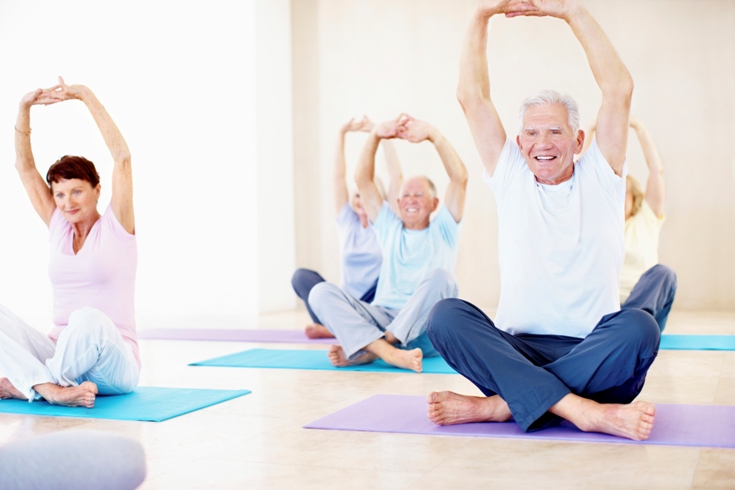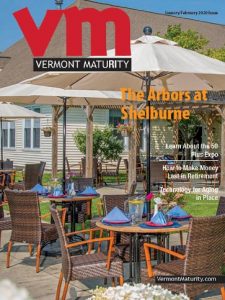
Of all possible exercises, stretching tends to be the most overlooked and neglected among seniors, yet nothing is more vital to keeping an aging body limber and injury-free. Here’s what you should know along with some tips and resources to help you regain some flexibility.
As we age, our muscles naturally lose their elasticity if you’re not active, which can make common day-to-day activities like reaching down to tie your shoes, or looking over your shoulder to back your car out of the driveway difficult.
But the good news is, by incorporating some simple stretching exercises into your routine (at least three times a week) you can greatly improve your flexibility, as well as enhance your balance, posture and circulation, relieve pain and stress, and prevent injuries. Stretching is also important as a warm-up and cool-down for more vigorous activities, and leg stretching is an excellent way to prevent nighttime leg cramps, too.
Stretching Basics
Stretching exercises should focus on the muscles in your calves, front and back thighs, hips, lower and upper back, chest, shoulders and neck. If you’ve had hip or back surgery, you should talk to your doctor before doing lower-back flexibility exercises.
If you don’t have any experience with stretching, there are books like “Stretching for Dummies” and “Stretching for 50+” that you can purchase at your local bookstore or amazon.com that provide instructions and illustrations of proper techniques.
There are also a number of DVDs and videos you can buy to guide you through a series of stretching exercises you can do at home. Collage Video (collagevideo.com, 800-819-7111) sells several at prices ranging between $10 and $20, as does iefit.com and amazon.com.
Also see a resource created by the National Institutes on Aging, that offers a free exercise DVD and booklet that provides illustrated examples of stretching exercises. You can order your free copies online or by calling 800-222-2225.
While stretching, it’s very important to listen to your body. You want to stretch each muscle group to the point where the muscle feels tight. If it hurts, you’ve gone too far. Back off to the point where you don’t feel any pain, then hold the stretch for 10 to 20 seconds. Relax, then repeat it three to five times, trying to stretch a little farther, but don’t bounce. Bouncing greatly increases your chance of injury.
It’s also a good idea to warm up a little before you start stretching by walking in place and pumping your arms. And remember to breathe when you stretch. Keep in mind that muscles that have not been stretched in a while take time to regain their flexibility. So be patient and go slowly.
Eastern Options
Another popular way to improve your flexibility is through gentle yoga or chair yoga. In chair yoga, you replace the yoga mat with a chair where most poses can be duplicated. This is much easier on tight, inflexible muscles.
To get started, there are DVDs and videos that offer yoga instructions and routines for seniors that you can do at home. Some good resources for finding them are peggycappy.net and yogaheart.com, or check with your local public library.
Tai chi is another good exercise option for improving flexibility and balance. To learn it, it’s best to work with an instructor who can teach you the correct movements and breathing techniques. To locate a class in your area, call your local senior center, health club or wellness center or check your yellow pages. If nothing’s available, tai chi DVDs for seniors (see amazon.com, collagevideo.com and iefit.com) are a good alternative.
Jim Miller publishes the Savvy Senior, a nationally syndicated column that offers advice for Boomers and Seniors.





 Related Articles & Free Subscription
Related Articles & Free Subscription
Comment here